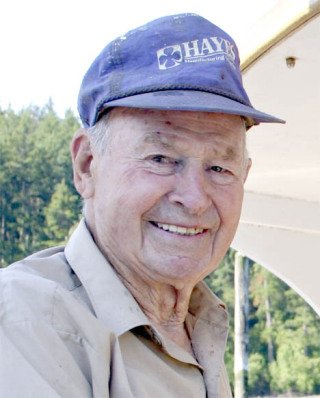In the early 1950s during the Korean War, one of the jobs assigned to destroyers when not screening carriers or bombarding inland targets of opportunity was to disrupt railroad traffic along the coast.
The rail line ran close to the water’s edge and where rocky points of land jutted out the North Koreans cut tunnels for a better right of way. At first, the trains ran boldly up and down the coast during daylight, but this very soon changed to a nighttime-only operation as our destroyers began to pick them off.
Their next gambit was then to park their trains in the tunnels during the day and make their runs only at night. Canny skippers then figured out that if they lay in close to the beach they could line their point of fire right up the axis of the tunnels, and pow! End of problem.
The USS Duncan (DDR-874) was steaming along the coast looking for errant trains when the lookout reported some strange objects in the water close aboard. As executive officer and navigator, I took a look and they appeared to look like crab pot buoys to me (I’m out of Seattle). I called the captain’s attention to them, and he CDR “Snuffy” Smith pronounced them to be lobster pot buoys (he was from Brooklyn, N.Y.).
We started to salivate at our common thought. I marked the location on my chart and he agreed that we would return the next foggy day.
Came the day — could hardly see the jack staff. We slipped in, sighted the buoys and launched the motor whaleboat. Skipper took the ship out a bit and hove to. We eased in to a buoy and heaved it aboard. As the object at the end of the line slowly came into view we saw that it was not a lobster trap but a large clay pot. We heaved it aboard anyway and dropped it in the bow section.
I was looking for the next buoy when I became aware that the bowhook and one othe crew were climbing out of the boat and sitting on the gunnel and the engineer was scrambling into the after compartment.
With eyes the size of dinner plates, the bowhook (speechless) pointed to the pot. Already half out of the pot was a large octopus headed for the nearest sailor. With no great enthusiasm, the next pot was pulled and its resident also seemed to have a yen for American sailors.
While we were engaged with keeping disengaged from the octopus, the fog lifted a bit and we could see the beach where a group of women were repairing a section of RR track. They spotted us about the same time and started to holler for some nearby soldiers who came on the run and began to fire on us. Being lovers, not heroes, the consensus in the boat seem to be that it was time to conclude our fishing expedition and head for home.
About this time, little splashes of water began to head our way and when several hit the boat I figured it was time to call in the artillery to relieve the pressure. So I called the captain and requested a couple of 5-inch rounds on the beach to cool things down a bit. This and some snappy zigzag maneuvers, with the engine laying down a smokescreen due to the redlined RPMs, got us safely back to the ship.
Duncan never looked better as she loomed out of the fog, but strangely she was carrying a starboard list. Then we could see the reason. Nearly all hands were on the starboard side to see our return.
Well, we got hooked aboard OK and the captain came off the bridge to meet us. He then called me aside and said, “You and your crew look real pale, so report to the sickbay immediately.”
“Yes, sir, on the way.”
We reported as ordered and were met by the chief pharmacist, “Doc,” and handed a nice glass of Old Methuselah, the best bourbon I have ever tasted.
“Compliments of the captain. He said that you looked like you need some medicine to return the color to your faces.”
We would have liked to have gotten enough octopi to feed the entire crew, but as you can see our fishing time was cut short. The problem of how to prepare the octopuses was solved when steward Rico came forward and said that he knew how to fix and cook them. And, they were good.
Incidentally, Rico was my steward years later onboard USS Markab (AR-23).
— Fred Hoeppner is a competitive sailor and a columnist for The Journal and SanJuanJournal.com





